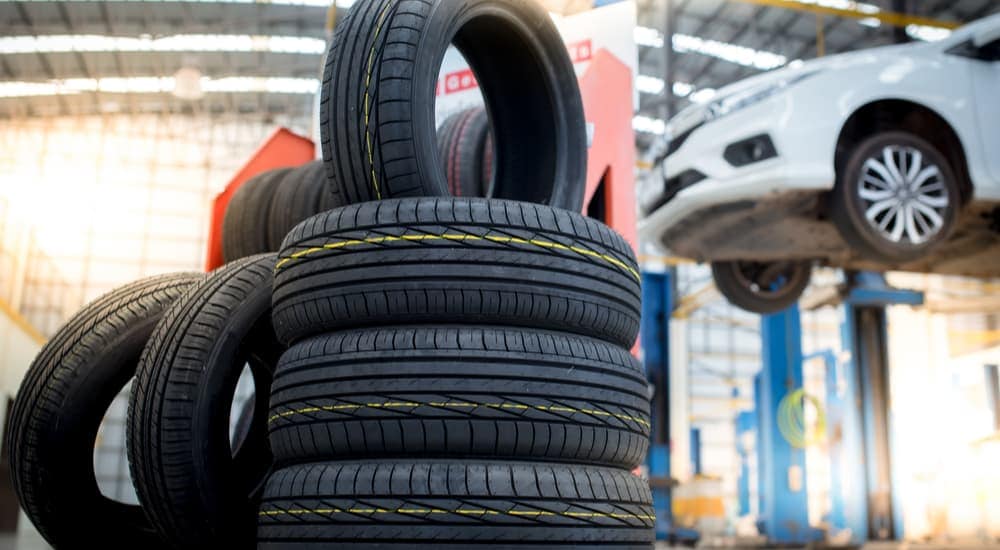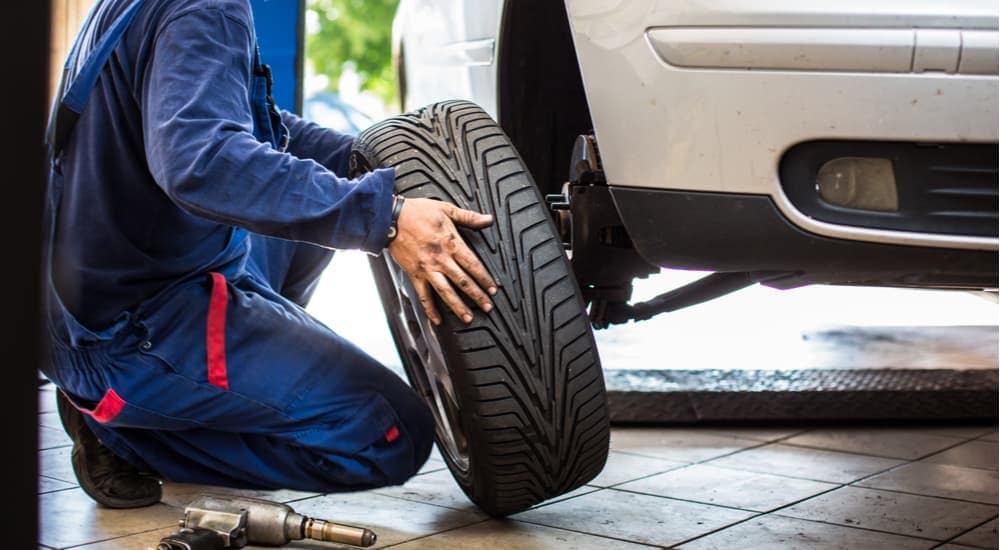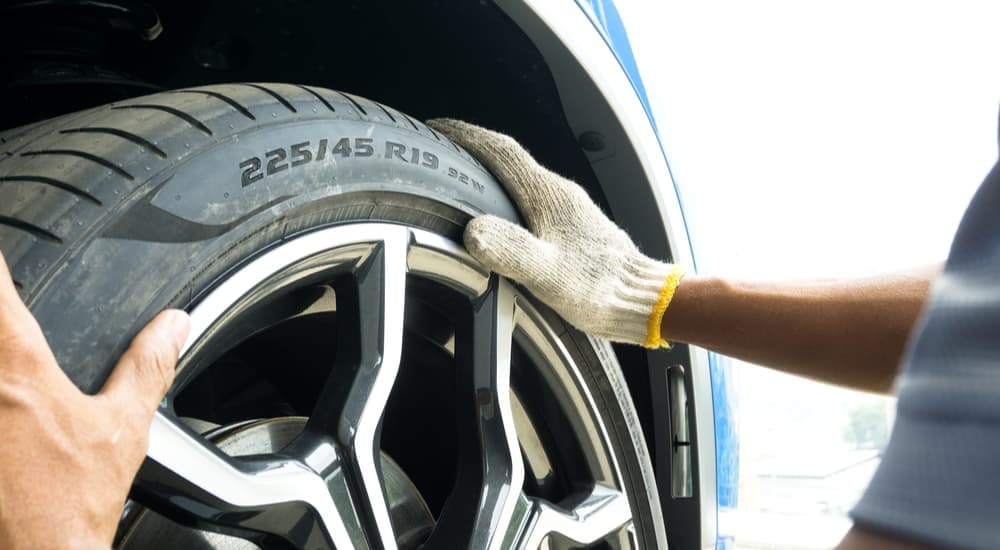Tire Health: The Best Practices for Tire Maintenance

When you think of maintaining your vehicle, what probably comes to mind is your engine, oil changes, air filter replacements, and other components under the hood. You probably don’t think about your tires as often as you should. Obviously, you know that if you have a flat, you need to get it replaced, and if the tire air pressure is getting low, you should probably fill it up. But, let’s say you go to a Hendrick Automotive Group service center in Wilmington, and we ask you, “When’s the last time you had your tires rotated?” Now, your instinctive thought may be, “Don’t they rotate all the time when I drive?”
If that sounds like you, here's what you need to know about keeping your tires in good shape. Tire rotation is a key part of tire maintenance, and sometimes, tires need to be replaced altogether due to wear and tear; a flat tire is not the only reason to replace a tire! Unfortunately, many drivers aren’t given a proper education on tire care best practices, and we’d like to take a small step forward in fixing that. Having a bit of insight into tire care can help you maximize your vehicle’s fuel efficiency and increase the longevity of your tires. There are only upsides to learning more about tire care, so this will be time well spent!
Tire Rotations
So, what is a tire rotation? Essentially, a tire rotation involves moving your tires to different corners of your vehicle. Generally, your front left tire will be moved to the back right, the back left moved to the front right, and so on. Tire rotation does not involve replacing any tires; it is simply a relocation of your current tires. As you can imagine, tire rotation is not a DIY type of project—this is something you will want to have a professional take care of, and thankfully, we have great options in the Wilmington area. Now, a fair response to hearing about the process of tire rotation is, “What’s the point? It’s all the same tires, so what difference does it make?” Great question.

While, from the outside, it may appear that all four tires are doing the same thing, that’s actually not quite the case. Different wheel positions play different roles in the way the vehicle handles. Think of the difference between front-wheel drive and rear-wheel drive; when two specific wheels are responsible for putting power to the ground, you’re likely to see those two tires wear faster than the other two. The front wheels are also responsible for turning the vehicle, which will cause additional wear. Finally, a vehicle’s weight distribution affects the way tires wear over time. The front and back are not usually equally heavy, which certainly has an effect on the tires.
The risk, and also the opportunity, at hand is that your tires are likely to wear unevenly over time. If two specific tires are carrying the brunt of the weight and controlling the steering while the other two are used more lightly, the two that are worn out can reduce your vehicle’s performance and cause safety risks. You may start to notice drifting, and the decreased tread can increase the risk of hydroplaning. Rotating your tires to give the worn tires a break and let the benchwarmers shine can increase your vehicle’s performance and safety and also save you money by avoiding early tire replacement.
Typically, the best practice is to have your tires rotated every 5,000 miles, which usually equates to about every six months. However, a good rule to live by, which many suggest, is to have your tires rotated every time you go in for an oil change. Now, you may be getting your oil changed more or less often than every 5,000 miles, but having your tires rotated at the same time can save you extra trips to the shop. We want Wilmington drivers to have their vehicles in good condition, so you might as well feed two birds with one scone. Tire rotations will keep you safe, improve your vehicle's handling, and save you money over time. There are no downsides! But, sometimes, a tire replacement is necessary. So, let's talk about that.
Tire Replacements
If you try to find a solid answer on when exactly it’s time to replace your tires, you’ll likely see mixed opinions in terms of mileage and number of years. The really important thing when considering tire health is not an exact mileage number but the actual wear and tear on the tires. When inspecting your tires for wear and tear, you want to look for any sign of uneven wear. While it may sound odd, signs of wear and tear across the whole tire are actually a good thing; that means the tire is distributing its work evenly, as it should. If you see signs of uneven wear on the tire—places that are more worn than others—that can be a red flag as it can indicate under or over-inflation or an improper alignment.
Now, if it looks like your tire is pretty evenly worn, the next step is to determine just how worn it is. To meet legal safety standards, the tire’s tread needs to be no less than two thirty-seconds of an inch deep. Now, how on earth do you figure that out? The Penny Test is a great way to gauge your tires' tread level. You’ll need a penny—if you don’t have one, borrow one from a friend. You’ll take the penny, put the edge in the tread of your tire, and rotate the penny so that Mr. Lincoln’s head is aimed downwards towards the tire’s tread; if the top of his head is covered by the tread, your tire meets the two thirty-seconds of an inch requirement. If the tread doesn't cover his head, it’s time for new tires.
 âÂÂÂÂÂÂÂÂ
âÂÂÂÂÂÂÂÂ
If you end up replacing a tire, it’s advisable to go ahead and change all four tires at once; doing so will not only keep your ride evenly balanced (this is particularly important for all-wheel drive vehicles) but will also keep the tires on a consistent replacement schedule. Rather than having to visit us every year or so for a new tire, doing all four at once allows you to keep them all on the same life cycle.
Keep Up With Tire Maintenance
Tire maintenance is a key part of your vehicle’s health. Keeping your tires in good health not only saves you money on tire replacements but also reduces rolling resistance, improving your vehicle's fuel economy, meaning you’ll save money on fuel as well. As you can see, it’s actually not that hard to keep your tires in good health; it just requires you to know what to look for. The best way to have your tires maintained properly is to visit a Hendrick Automotive Group service center in Wilmington. Getting your tires rotated when you go in for an oil change ensures that they won’t wear any quicker than they need to. And when it’s time for tire replacement, you’ll know that they’ve had a good, long, healthy life.
 AdChoices
AdChoices